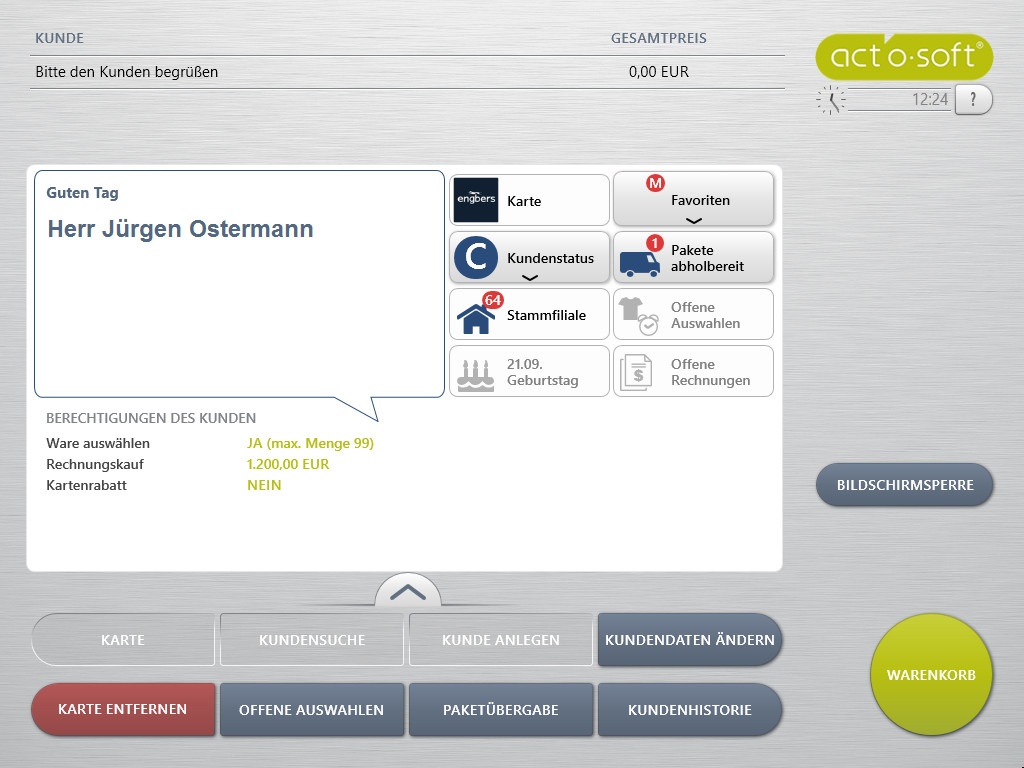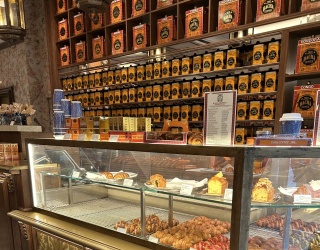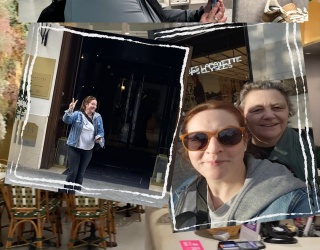The men’s clothing store engbers has recently completed the test phase of a new omnichannel solution for its in-store point of sale systems. Now the rollout starts in all 320 stores throughout Germany and Austria. The implementation primarily focused on the user experience of the employees to strengthen and improve their interaction with the customers.
We talked to Franziska Hogelucht (engbers Männermode), Christian Malachowski and Elmar Klages-Brindöpke (software developer act‘o-Soft) about the backdrop and benefits of the new system.
Hogelucht: ”Employees don’t notice that we initiate various subsequent downstream processes. Customers can buy an item in-store, order another item and pay their bill at the same time. At the POS, all of this is one transaction. The distinction is then made in the downstream system.“
Ms. Hogelucht, why are you investing in a new omnichannel system for your point of sale systems?
Hogelucht: Our goal is to upgrade and expand our family-style relationships between employees and customers at engbers by using a new omnichannel system since we had gradually reached the limits with our old system; both in terms of flexibility and adjustments as well as post-processing in our ERP system. The new software helps us to upgrade these processes to support an integrated omnichannel concept.
What is the system able to do?
Hogelucht: The new software enables us to run all processes that customers can enjoy in retail settings such as Click and Collect, Click&Reserve et cetera at the POS to where they seem like one process for customers and employees. Our goal here is to strengthen our brick and mortar stores.
How is the implementation moving along?
Hogelucht: We are in the final stages of the test phase. We have tested the functions with several branch managers. The omnichannel processes that were customized for our system will now run on all the POS systems during the first quarter. Once we go live everywhere, our customers can purchase products at engbers anytime and anywhere on any device.
So the test phase was successful and went well?
Hogelucht: Yes, we are very pleased. We had to make some adjustments in a few places – especially when it came to processes with very complex customer requests that involve a mix of online and offline purchases at the POS. For example, a customer still has a gift card balance and a bill he now wants to pay at the store, while he might also want to order another item at the same time and exchange merchandise he purchased online.

Mr. Malachowski, you and act’o-soft are responsible for implementing the omnichannel functions in the engbers system. How do you solve the type of omnichannel payment scenario that Ms. Hogeluch just described from a software perspective?
Malachowski: In the case of engbers, the readjustment during the test phase primarily pertained to the downstream processes as it relates to the buying process at the POS. For example, engbers‘ accounting department wanted to maintain separate accounts for processes of the brick and mortar stores and the online store.
That’s why we had to make sure that all information in regards to the source of the purchase is transferred to the downstream systems to indicate where the amount should be allocated to.
Mr. Klages-Brindöpke, what is the technology behind the omnichannel process?
Klages-Brindöpke: In this case, our solution is a special service where the ERP system of engbers runs in the background (Microsoft Dynamics AX). Our web services middleware was developed in dot.net-Core. We integrated the special web services that were in parts newly developed by engbers via simple mapping. This gives us a joint middleware that’s based on our standards. The omnichannel processes have been gradually implemented in several stores since March 2017.
Ms. Hogelucht just mentioned that all of these processes run in the background and seem to be just one process in the eyes of both the customers and employees. Why is this so important?
Malachowski: We emphasize human digitization. Besides, customers always have to perceive all of this as one process because they essentially don’t care whether an omnichannel process is integrated or not. Having said that, by design, engbers makes its store employees take center stage in its processes. That’s why we emphasize the user experience when it comes to our cash registers and POS systems. Employees are meant to understand the processes based on effective software guides that direct them through the system.
Ms. Hogelucht, how are the sales employees handling the new system?
Hogelucht: We had used our old system for the past 17 years. Our staff members who have used this system for a while took a little longer to make the transition. However, all of our new colleagues agree that our job training is faster and the POS system has a clearer structure than before.
What are your future plans in terms of digitization?
Hogelucht: We are acutely aware that we will always continue to make improvements because this is a fast-paced, ever-changing business world, especially when it comes to consumer buying behavior. I hope we will continue to learn more about the behavior of our customers and our employees, who have built very close-knit relationships thanks to communication skills.
Note on EuroCIS 2018 events:
The EuroCIS 2018 lecture titled “Human Digitization: Strengthening Engbers Stores through Integrated Omnichannel” by Franziska Hogelucht of engbers GmbG & Co. KG and Christian Malachowski of act’o-soft GmbH highlights how software developer act’o-Soft helps to improve employee and customer interaction at the Omnichannel Forum on February 28, 2018 from 11:30 AM – 12:00 PM.









